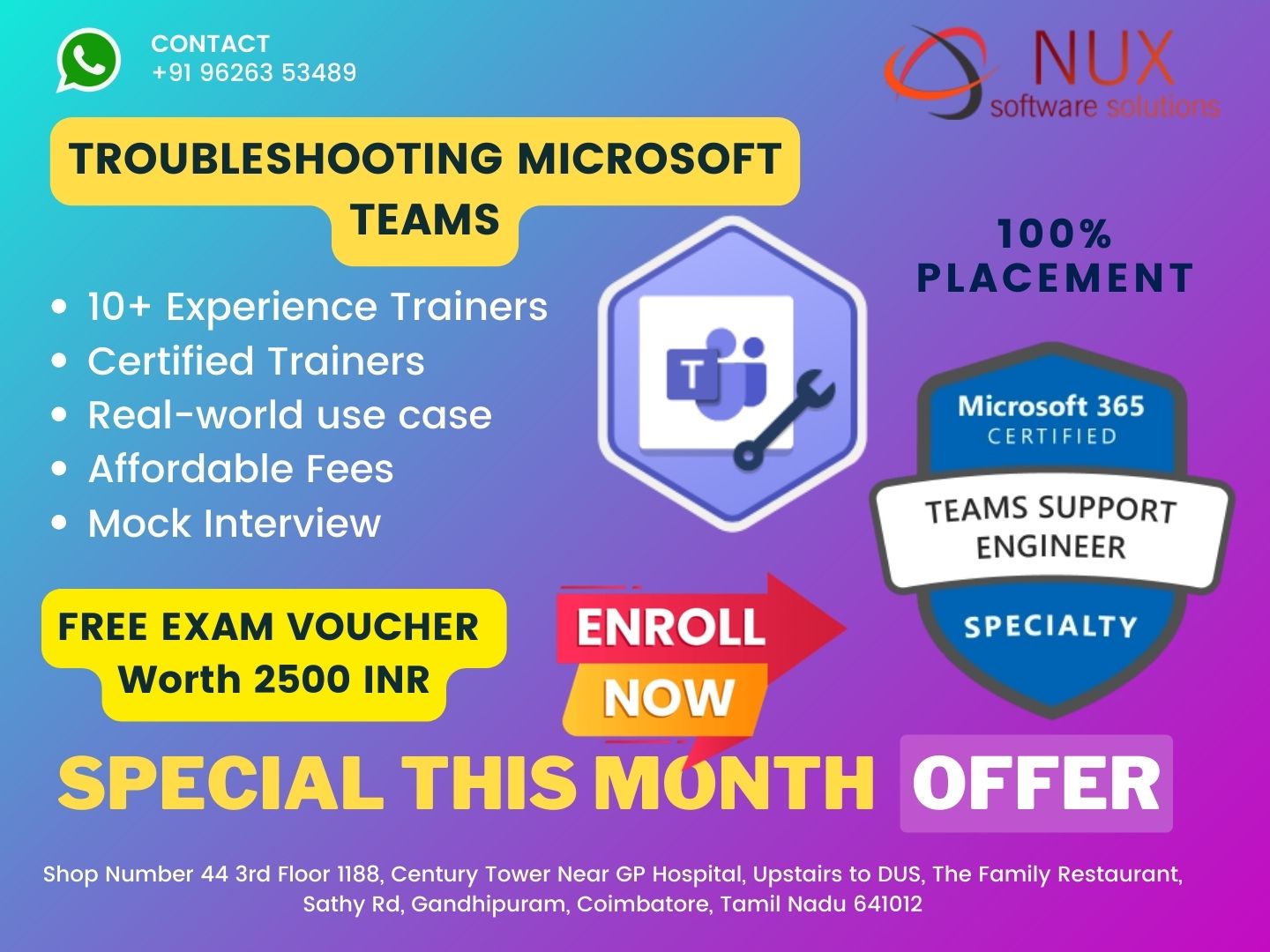Microsoft Azure Architect Design – AZ304


Microsoft Certified: Microsoft Azure Architect Design – AZ304 is one of the best cloud solutions available and in order to be an expert on this particular application Nux software Solutions is your one-stop destination. Over the years, we have been one of the premium institutes when it comes to rendering quality training in various domains of IT. We have a team of experts and highly qualified faculties who have been rendering quality training to our students.
The Microsoft Azure Architect Design -AZ304
At Nux software Solutions, we have designed a highly customized and effective course material that is based in lab work and lots of hands-on application. We have made sure that our students got maximum practical exposure that would help them to achieve their goals in the professional fields.
Course Syllabus
Modules
Design Monitoring (10-15%)
Design for cost optimization
- recommend a solution for cost management and cost reporting
- recommend solutions to minimize costs
Design a solution for logging and monitoring
- determine levels and storage locations for logs
- plan for integration with monitoring tools including Azure Monitor and Azure Sentinel
- recommend appropriate monitoring tool(s) for a solution
- choose a mechanism for event routing and escalation
- recommend a logging solution for compliance requirements
Design Identity and Security (25-30%)
Design authentication
- recommend a solution for single-sign-on
- recommend a solution for authentication
- recommend a solution for Conditional Access, including multi-factor authentication
- recommend a solution for network access authentication
- recommend a solution for a hybrid identity including Azure AD Connect, Azure AD Connect cloud sync, and Azure AD Connect Health
- recommend a solution for user self-service
- recommend and implement a solution for B2B integration
Design authorization
- choose an authorization approach
- recommend a hierarchical structure that includes management groups, subscriptions, and resource groups
- ecommend an access management solution including RBAC policies, access reviews, role assignments, Privileged Identity Management (PIM), Azure AD Identity Protection, Just In Time (JIT) access
Design governance
- recommend a strategy for tagging
- recommend a solution for using Azure Policy
- recommend a solution for using Azure Blueprintsy
- recommend a solution that leverages Azure Resource Graph
Design security for applications
- recommend a solution that includes Key Vault
- recommend a solution that includes managed identities
- recommend a solution for integrating applications into Azure AD
Design Data Storage (15-20%)
- Design a solution for databases
- select an appropriate data platform based on requirements
- recommend database service tier sizing
- recommend a solution for database scalability
- recommend a solution for encrypting data at rest, data in transmission, and data in use
Design data integration
- recommend a data flow to meet business requirements
- implement Azure Backup for Azure workloads
- recommend a solution for data integration, including Azure Data Factory, Azure Databricks, Azure Data Lake, Azure Synapse Analytics
Select an appropriate storage account
- choose between storage tiers
- recommend a storage access solution
- recommend storage management tools
Design Business Continuity (10-15%)
Design a solution for backup and recovery
- recommend a recovery solution for Azure hybrid and on-premises workloads that meets recovery objectives (RTO, RLO, RPO)
- design and Azure Site Recovery solution
- recommend a solution for recovery in different regions
- recommend a solution for geo-redundancy of workloads
- recommend a solution for Azure Backup management
- design a solution for data archiving and retention
Design for high availability
- recommend a solution for application and workload redundancy, including compute, database, and storage
- recommend a solution for autoscaling
- identify resources that require high availability
- identify storage types for high availability
Design Infrastructure (25-30%)
Design a compute solution
- recommend a solution for compute provisioning
- determine appropriate compute technologies, including virtual machines, App Services, Service Fabric, Azure Functions, Azure Virtual Desktop, Batch, HPC and containers - recommend a solution for containers
- recommend a solution for automating compute management
Design a network solution
- recommend a network architecture (hub and spoke, Virtual WAN)
- recommend a solution for network addressing and name resolution
- recommend a solution for network provisioning
- recommend a solution for network security including private Link, firewalls, gateways, network segmentation (perimeter networks/DMZs/NVAs)
- recommend a solution for network connectivity to the Internet, on-premises networks, and other Azure virtual networks
- recommend a solution for automating network management
- recommend a solution for load balancing and traffic routing
Design an application architecture
- ecommend a microservices architecture including Event Grid, Event Hubs, Service Bus, Azure Queue Storage, Logic Apps, Azure Functions, Service Fabric, AKS, Azure App Configuration and webhooks
- recommend an orchestration solution for deployment and maintenance of applications including ARM templates, Azure Automation, Azure Pipelines, Logic Apps, or Azure Functions
- recommend a solution for API integration
Design migrations
- assess and interpret on-premises servers, data, and applications for migration
- recommend a solution for migrating applications and VMs
- recommend a solution for migration of databases
- determine migration scope, including redundant, related, trivial, and outdated data
- recommend a solution for migrating data (Storage Migration Service, Azure Data Box, Azure File Sync-based migration to hybrid file server)



